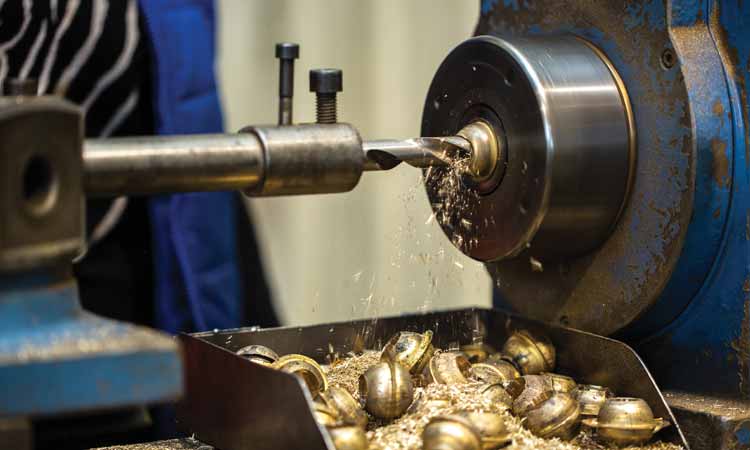Precision balls play a crucial role in various industries, from automotive and aerospace to medical and electronics. The evolution of precision ball manufacturing has been marked by continuous advancements in technology, materials, and processes. This article delves into the intricacies of manufacturing precision balls and explores the notable milestones in their evolution.
Historical Perspective
The history of precision ball manufacturing dates back to the 19th century when the Industrial Revolution sparked a demand for high-precision components. Initially, the production process relied on manual labor, limiting the consistency and quality of precision balls.
Materials Revolution
The evolution of precision ball manufacturing witnessed a significant shift with the introduction of new materials. Traditional materials like steel were soon accompanied by ceramics, plastics, and advanced alloys. Each material brought unique properties, catering to diverse industrial applications.
Precision Machining Techniques
The manufacturing process for precision balls has evolved from manual methods to sophisticated precision machining techniques. Modern CNC (Computer Numerical Control) machines enable high-precision and repeatable manufacturing, ensuring consistency in size, shape, and surface finish.
Tolerance Standards
As industries demanded tighter tolerances and increased performance, international standards for precision balls were established. Organizations like the International Organization for Standardization (ISO) have defined stringent criteria for ball diameter, sphericity, surface quality, and hardness, guiding manufacturers towards excellence.
Surface Finish and Coating Technologies
Achieving optimal surface finish is critical for precision balls. Advanced polishing and lapping technologies ensure smooth surfaces, reducing friction and wear. Additionally, coating technologies such as PVD (Physical Vapor Deposition) and CVD (Chemical Vapor Deposition) enhance the durability and performance of precision balls in challenging environments.
Miniaturization Challenges
As technology trends push for smaller and more precise components, the manufacturing of miniature precision balls presents unique challenges. Innovations in micro-manufacturing processes and metrology tools have allowed the production of sub-millimeter precision balls with unparalleled accuracy.
Quality Control and Inspection
The evolution of precision ball manufacturing is closely tied to advancements in quality control and inspection methods. Automated inspection systems using optical and laser technologies ensure that each ball meets the specified tolerances, maintaining the highest quality standards.
Applications Across Industries
Precision balls find applications in a myriad of industries. In the automotive sector, they are integral to bearing systems; in aerospace, they contribute to the smooth operation of control systems; and in medical devices, they facilitate precise motion control. The versatility of precision balls underscores their significance in modern engineering.
The Scenario in India Overview
India has been gradually gaining prominence in precision manufacturing, including precision ball production. The industry has expanded to meet both domestic demand and contribute to the global market. Several factors contribute to India’s position in precision ball making, including skilled labor, technological advancements, and a growing focus on quality standards.
Key Aspects
Skilled Workforce: India has a pool of skilled engineers, technicians, and workers contributing to the precision engineering sector. The availability of a skilled workforce is crucial for the intricate and precise processes involved in manufacturing precision balls.
Technological Advancements: The Indian manufacturing sector has been adopting advanced technologies, including precision machining techniques and automated manufacturing processes. This has enhanced the quality and efficiency of precision ball production.
Diverse Applications: Precision balls are used in various industries such as automotive, aerospace, medical devices, and electronics. The growth of these industries in India has driven the demand for high-quality precision components.
Quality Standards: With the globalization of manufacturing, adherence to international quality standards has become crucial. Indian manufacturers in the precision ball sector often align with global standards such as those set by the International Organization for Standardization (ISO).
Emerging Players: Several Indian companies are actively involved in precision ball manufacturing. These companies vary in size and specialization, catering to different industry needs. The competitive landscape has encouraged companies to invest in research and development for continuous improvement.
Global Market Presence: Indian precision ball manufacturers have started making a mark in the global market by exporting their products. This international presence indicates the competitiveness and quality of the precision balls produced in India.
Challenges
Research and Development: Continued investment in research and development is essential to keep pace with evolving technologies and market demands. Indian companies need to focus on innovation to stay competitive globally.
Infrastructure: While there have been improvements, challenges related to infrastructure, such as logistics and transportation, can impact the efficiency of the supply chain.
Regulatory Compliance: Meeting and maintaining compliance with international standards is crucial for exporting precision balls. Indian manufacturers need to stay updated on the latest standards and regulations.
Future Outlook
The future of precision ball manufacturing in India looks promising, given the country’s emphasis on manufacturing excellence and technological advancement. As industries continue to evolve and demand for precision components increases, Indian manufacturers are likely to play an even more significant role in the global supply chain for precision balls.
Conclusion
Looking ahead, the evolution of precision ball manufacturing is likely to be shaped by emerging technologies such as additive manufacturing (3D printing) and advancements in nanotechnology. These innovations have the potential to redefine the limits of precision, enabling the production of even smaller and more intricate precision balls.
The journey of precision ball manufacturing has been one of continuous refinement, driven by the pursuit of perfection in engineering. As industries evolve and technology progresses, the intricacies of precision ball manufacturing will continue to shape the future of countless applications, playing a pivotal role in the advancement of modern technology.


